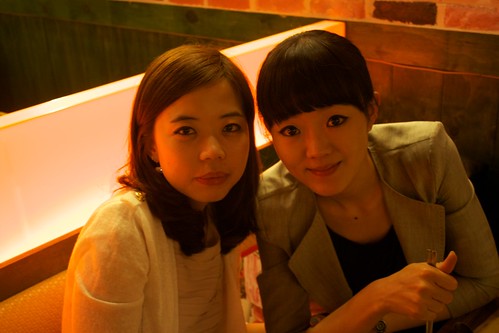The brief history of the prison... When the Japanese occupied Korea they used the prison as a concentration camp of sorts, at least according to the material I read. Individuals who professed they wanted independence or were rebel rousers were sent to the prison. Conditions were poor, summers were hot, winters were cold, and many people were persecuted for their beliefs. There was a factory on the grounds so prisoners could work, making supplies for the Japanese during the war. Additionally, there was an underground torture chamber, execution building, and an underground secret passage way that was used to remove the corpses of dead activists.
All in all it was a really interesting place. From what I gathered, after the Japanese left Korea, the same prison was again used by a Korean dictator to imprison individuals who wanted democracy, a fact which I was unaware of. I knew their had been a dictatorship but never heard it was so brutal. After the prison, while we were still in Seoul we headed to Katrina's favorite restaurant and got some falafel and hummus. It was a great trip for a spur of the moment.
 (Entrance to the prison. It was only a $1.50 to get in so once again, I would highly recommend it.)
(Entrance to the prison. It was only a $1.50 to get in so once again, I would highly recommend it.) (One of the torture devices)
(One of the torture devices) (An interactive feature - luckily they had plexiglass surrounding the walls so I didn't need to worry about the spikes. Let me tell you, not comfortable, even after 5 minutes. I couldn't imagine a day or two, let alone a week or two...)
(An interactive feature - luckily they had plexiglass surrounding the walls so I didn't need to worry about the spikes. Let me tell you, not comfortable, even after 5 minutes. I couldn't imagine a day or two, let alone a week or two...) (This little room was designed so a person had to stand but could not stand up right or in a comfortable position.)
(This little room was designed so a person had to stand but could not stand up right or in a comfortable position.) (This is a room filled with pictures to remember all the activists who fought for independence, either against Japan of the Korean dictatorships.)
(This is a room filled with pictures to remember all the activists who fought for independence, either against Japan of the Korean dictatorships.) (A shot of the prison grounds. Many of the buildings had been torn down after the Japanese occupation.)
(A shot of the prison grounds. Many of the buildings had been torn down after the Japanese occupation.) (Reverence Monument - a place to remember those who lost their lives at Seodaemun Prison.)
(Reverence Monument - a place to remember those who lost their lives at Seodaemun Prison.) (Reverence Monument and more of the grounds)
(Reverence Monument and more of the grounds) (Katrina liked the lines of the buildings and so did I. This is one of the buildings where prisoners were kept.)
(Katrina liked the lines of the buildings and so did I. This is one of the buildings where prisoners were kept.) (Katrina with part of the prison behind her)
(Katrina with part of the prison behind her) (An interesting brick made at the factory inside the prison. They were all stamped with the same logo so the Japanese knew where the came from.)
(An interesting brick made at the factory inside the prison. They were all stamped with the same logo so the Japanese knew where the came from.) (Independence Park lies outside the prison.)
(Independence Park lies outside the prison.) (Statue on the park grounds)
(Statue on the park grounds) (Interesting little book store we found in an ally way)
(Interesting little book store we found in an ally way) (A fun little market)
(A fun little market) (falafel)
(falafel) (hummus)
(hummus)





















